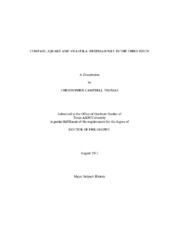| dc.description.abstract | Nazi persecution was not uniform and could be negotiated by the groups being targeted based on a number of factors including the racial status of the group being persecuted, the willingness of the group members to cooperate with the regime, the services and skills the group had to offer and the willingness of the regime to allow cooperation. The experience of Freemasons under the Third Reich provides an example of the ability of targeted groups to negotiate Nazi persecution based on these factors. As members of the educated and professional class, Freemasons belonged to the demographic that most strongly supported Hitler from the late 1920s until war's outbreak in 1939. For Hitler, the skills these men possessed as doctors, lawyers, businessmen and bankers were essential to the success of the regime. So what would have otherwise been a mutually beneficial relationship eagerly sought after by both parties was prevented by the fact that the men were Freemasons and thus had ties to an organization whose ideology stood in complete contrast to that of National Socialism.
However, because the identifier "Freemason" was not one based on biology or race, Freemasons had the ability to shed their identity as Freemasons by leaving the regime, an ability that they willingly and eagerly exercised. In return, the Nazi Party had to decide to what extent former Freemasons, whose professional skills and talent were so essential, could be allowed to work with the regime. Thus began the complex dance of compromise as each side tested the limits of what it could and couldn't do in order to cooperate with the other. For former Freemasons, the goal was trying to prove loyalty to the regime in the face of their previous lodge membership. For the regime the goal was finding a balance between ideological purity and practical necessity. Though the Nazis destroyed Freemasonry as an institution, the success of former Freemasons in aligning with the party as individuals shows the ability of Germans, even those in targeted groups, to escape persecution and even benefit from the regime that had previously targeted them. | en |


